Fairy Ring Management
Fairy ring on turfgrass is difficult to control. It is caused by any of 60 or more soil-borne basidiomycete fungi. Fairy ring fungi do not directly attack plants but instead cause problems by stimulating turf and/or causing hydrophobic soils that lead to localized dry spot (LDS). Fairy ring fungi use lignin in thatch and organic matter as a food source.
// Key points:
- Fairy Ring is especially problematic on greens due to low mowing height and sand-based root zones.
- Cultural practices are important elements of a management program.
- Start preventative fungicide applications in the early spring when 5-day average soil temperatures reach 13–16°C at 5cm depth.
- Dedicate® FORTE Stressgard® label extension application has been submitted to the APVMA for Take-All Patch.
// The Problem
Fairy Ring on turfgrass is difficult to control. It is caused by any of 60 or more soil-borne basidiomycete fungi. Fairy Ring fungi do not directly attack plants but instead cause problems by stimulating turf and/or causing hydrophobic soils that lead to localized dry spot (LDS). Fairy Ring fungi use lignin in thatch and organic matter as a food source. All turfgrass species can be affected by Fairy Ring. Greens are particularly vulnerable to Fairy Ring given their low mowing height and sand-based rootzone.
// What To Look For
Fairy Ring on turfgrass occurs in rings, arcs or patches that can vary greatly in size. The size often ranges from several centimetres to several metres in diameter, with large rings reaching 3 metres or more. Three types of Fairy Ring are used to help describe symptoms and associated turf damage: Type 1 = brown rings of dead turf, Type 2 = green rings of stimulated turf growth, and Type 3 = the presence of mushrooms or puffballs.

Above ground mushrooms or puffballs may not always be seen with Fairy Ring. Instead, a layer of white Mycelia or a band of dry, brown-orange, or yellowish material will be present in the thatch, mat, or soil layers. Depth of Fairy Ring activity is important information to know for fungicide applications.
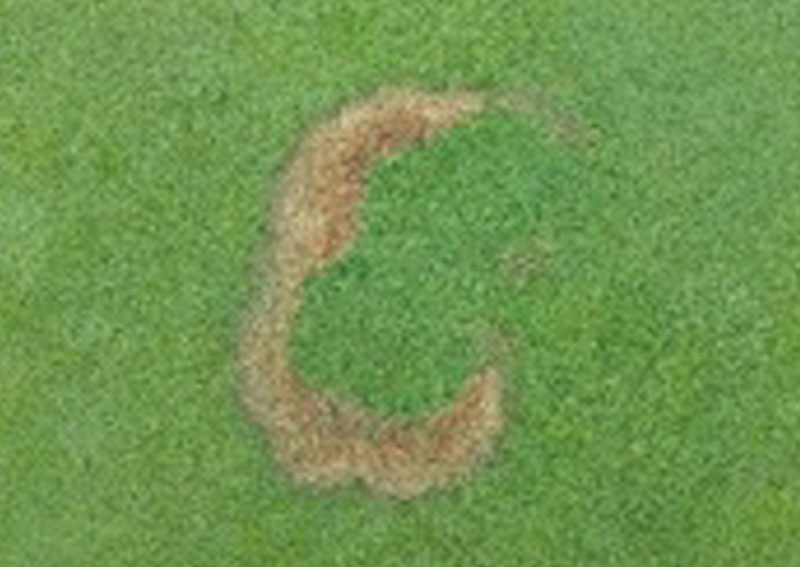 |
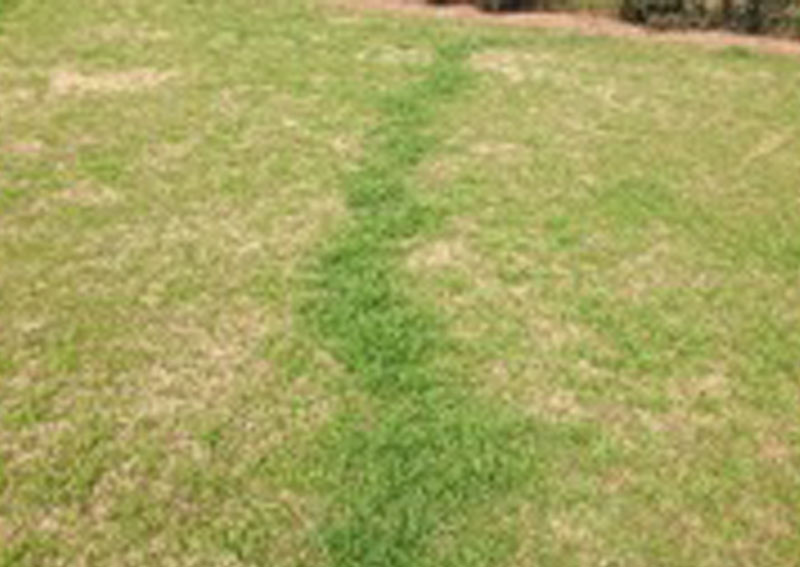 |
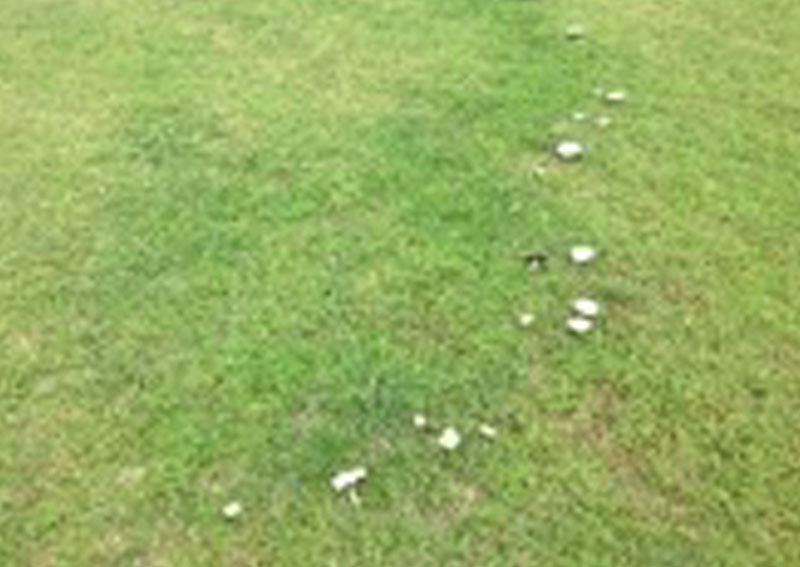 |
| Type 1 | Type 2 | Type 3 |
|---|
To determine the depth of the fungus, soil cores can be collected from the ring and incubated in a warm high humidity environment (sealed container of plastic bag). Mycelium will be produced by the fungus on the sides or the cores to indicate where it is present in the soil. Aggressive turf management with minimal water and nitrogen, and low mowing heights can increase Fairy Ring symptom severity. During mid-summer heat stress, Fairy Ring can quickly progress from type 2 green rings to type 1 dead rings.
// The Solution
Core aerification, vertical mowing and frequent sand topdressing reduce thatch and organic matter, minimizing Fairy Ring severity. Aerification by tinning or spiking also improves overall drainage and gas exchange.
Water management, fertility and mowing height can influence symptoms of Fairy Ring. Fairy Ring symptoms are enhanced on slow-growing and nitrogen-starved turf. Nitrogen levels (tissue testing) should be evaluated to help maintain optimal turf health.
Wetting agents are useful to address LDS associated with Fairy Ring activity. Apply wetting agents regularly, but space them two weeks apart from DMI fungicide applications. Wetting agents can be mixed with non-DMI fungicides, but tank-mixing is not recommended with DMIs because it risks turf injury.
Preventive Fairy Ring control is much more effective than curative control. Apply preventive fungicides when the 5-day average soil temperature (5cm depth) reaches 13-16°C. Solutions for Fairy Ring include Dedicate® FORTE Stressgard® Turf Fungicide. Two applications should be made in the spring on a 28-day interval.
Applications should be made with high volume flat fan nozzles and watered-in to the depth of the Fairy Ring as needed. Dedicate FORTE Stressgard applications in the early spring are the essential part of the Fairy Ring programme, and will also provide early-season Dollar Spot control.
| Two applications of Dedicate FORTE Stressgard in the spring at 3.5 L/ha | |
|---|---|
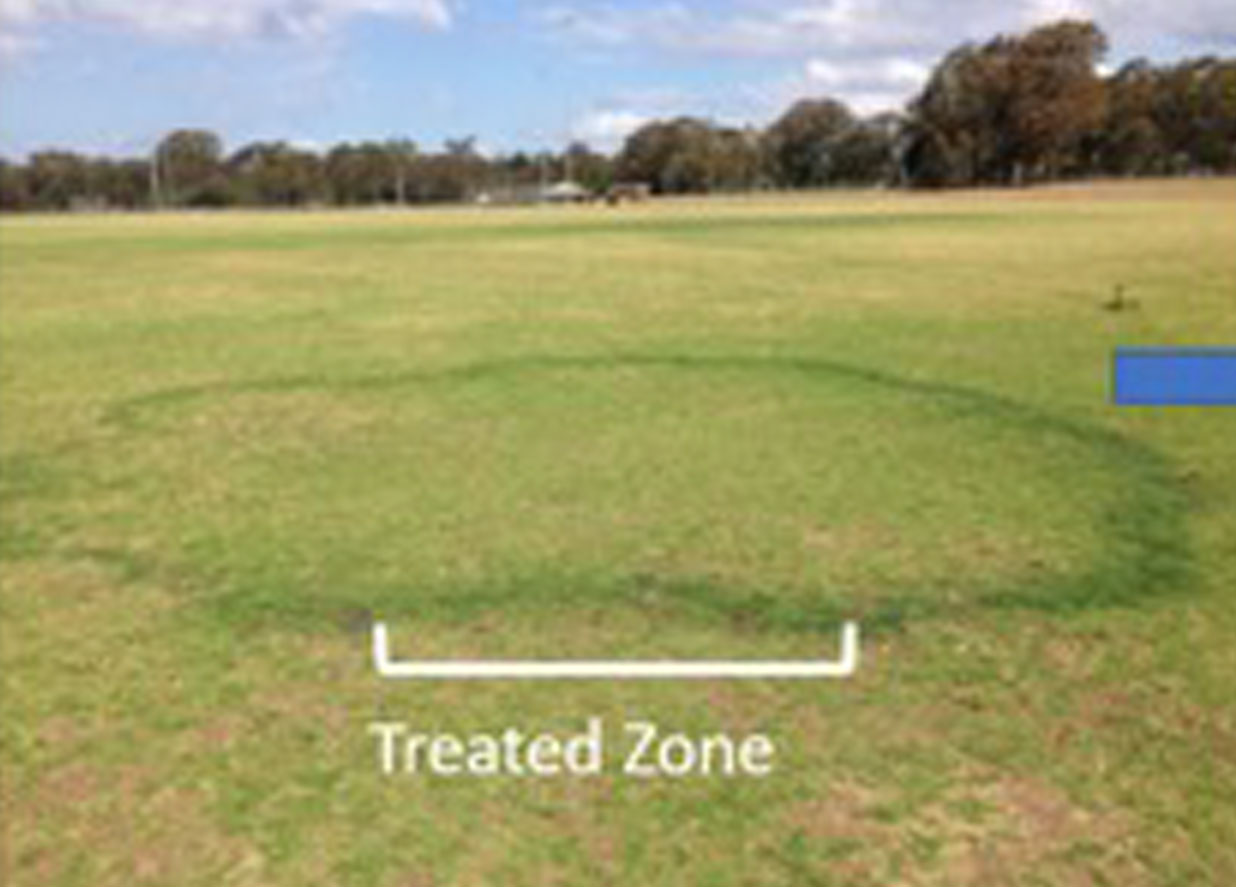 |
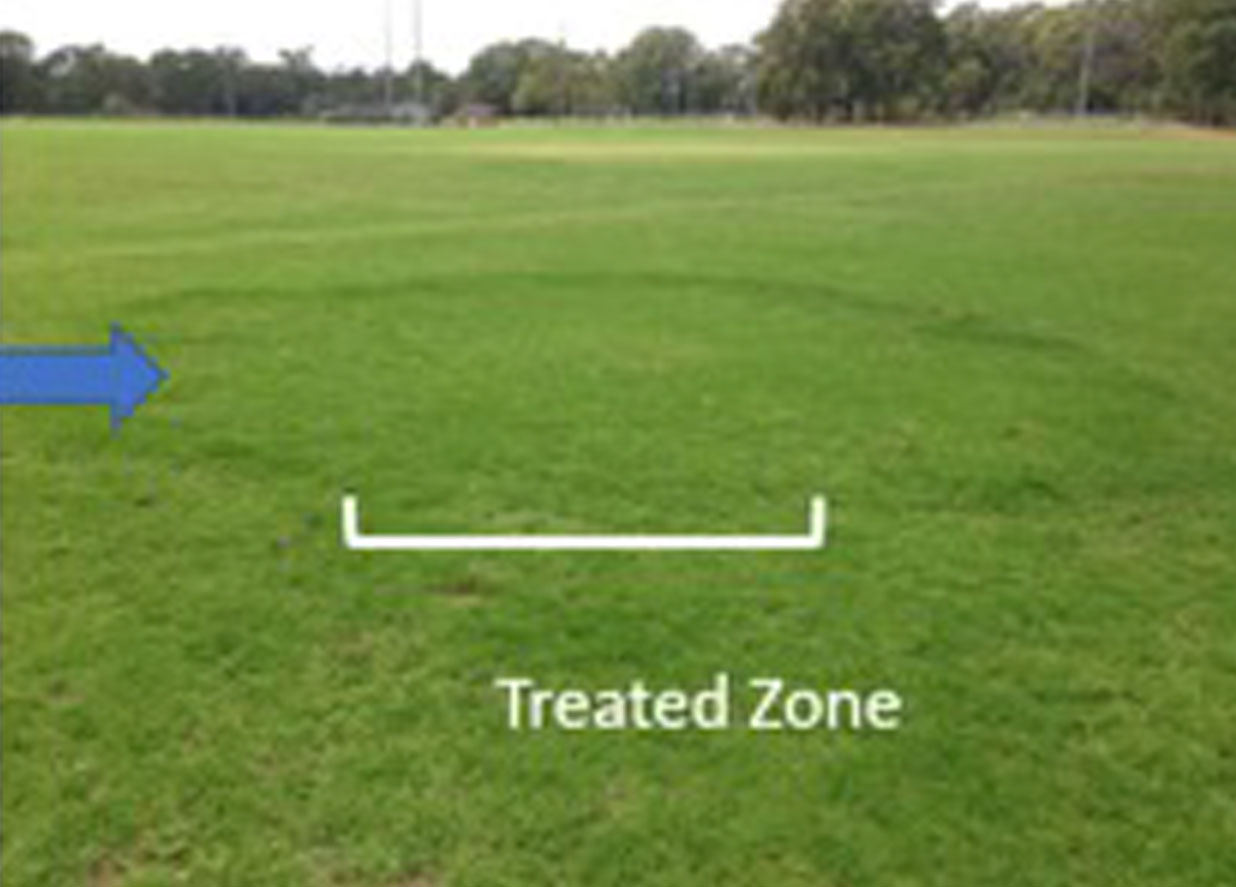 |
| Before treatment (7th Oct 2014) | 21st Dec 2014 |
// Dedicate FORTE Stressgard Label Expansion for Take-All Patch
An application has been made with the APVMA to add Take-All Patch (Gaeumannomyces spp.) to the diseases controlled on the Dedicate FORTE Stressgard label. The management of this disease is by preventative applications made in the autumn (and spring in situations of high disease pressure). Proposed application timing is based on soil temperature as outlined below. A second application should be made 21–28 days later.
| Comments | Time | Treatment |
| Autumn applications most important. In situations of chronic take-all make the spring applications as well. | Autumn (when soil temp drops below 16°C) | 2 applications at 3.5L/ha at 21–28 day interval |
| Spring (when soil temp is greater than 13°C for 5 days) | 2 applications at 3.5L/ha at 21–28 day interval |
To find out more information about our products and services, reach out to our team.
Always read the label before use.
